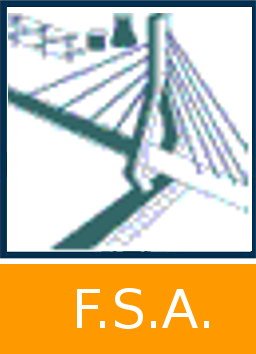Preliminary design of a Type V gaseous hydrogen tank and study of the sloshing in a cylindrical liquid hydrogen tank
Evans, Dimitri 
Promoteur(s) :
Ponthot, Jean-Philippe 
Date de soutenance : 24-jui-2021/25-jui-2021 • URL permanente : http://hdl.handle.net/2268.2/11721
Détails
| Titre : | Preliminary design of a Type V gaseous hydrogen tank and study of the sloshing in a cylindrical liquid hydrogen tank |
| Auteur : | Evans, Dimitri 
|
| Date de soutenance : | 24-jui-2021/25-jui-2021 |
| Promoteur(s) : | Ponthot, Jean-Philippe 
|
| Membre(s) du jury : | Boman, Romain 
Séverin, Pierre Dimitriadis, Grigorios 
|
| Langue : | Anglais |
| Mots-clés : | [en] hydrogen [en] tank [en] liquid hydrogen [en] aircraft [en] Filament winding [en] sloshing |
| Discipline(s) : | Ingénierie, informatique & technologie > Ingénierie aérospatiale |
| Commentaire : | It is confidential. It can not be distributed. |
| Centre(s) de recherche : | Coexpair |
| Institution(s) : | Université de Liège, Liège, Belgique |
| Diplôme : | Master en ingénieur civil en aérospatiale, à finalité spécialisée en "aerospace engineering" |
| Faculté : | Mémoires de la Faculté des Sciences appliquées |
Résumé
[en] The trend towards hydrogen technologies has recently gained weight in order to reduce fossil fuel CO2 emissions. On this path, Coexpair has developed an interest in hydrogen storage. \\
In this context, this master's thesis presents first the different types of pressure vessels available on the market to understand the benefits of the all-composite Type~V tanks. A literature review of the past and current use of hydrogen in the transport industry is conducted to identify the type of tank used for each dedicated transportation mean. \\
This report proposes a methodology for the preliminary design of a Type~V filament-wound pressure vessel to store gaseous hydrogen for a tugboat application. A complete analytical study is conducted to determine the optimal domes geometry and the winding angle evolution over them based on non-geodesic trajectories. The classical lamination theory is used to compute the thickness required in the pressure vessel parts and a recent formulation is employed to compute the thickness evolution in the domes considering fibers overlap. A finite element analysis is led for the cylindrical part of the vessel to highlight the limitations of the analytical study. The tank is compared to other designs present on the market through performance indices, showing that the proposed design presents an added value. \\
The last part of the report studies the sloshing inside a liquid hydrogen tank for a medium-range aircraft using the Particle Finite Element Method developed at the University of Liège. The results provided by the simulations are corroborated by an experimental test conducted with a test tank. The parameters used to conduct the simulations and their implication are highlighted. Free-surface evolution and pressure fluctuations are presented for horizontal and vertical sloshing in a full-size cylindrical tank.
Fichier(s)
Document(s)

 Résumé_Evans_Dimitri.pdf
Résumé_Evans_Dimitri.pdf
Description: Résumé + figures
Taille: 5.47 MB
Format: Adobe PDF

 Summary_Evans_Dimitri.pdf
Summary_Evans_Dimitri.pdf
Description: Summary + figures
Taille: 5.47 MB
Format: Adobe PDF

 Thesis_Evans_Dimitri.pdf
Thesis_Evans_Dimitri.pdf
Description: -
Taille: 79.58 MB
Format: Adobe PDF
Citer ce mémoire
L'Université de Liège ne garantit pas la qualité scientifique de ces travaux d'étudiants ni l'exactitude de l'ensemble des informations qu'ils contiennent.


 Master Thesis Online
Master Thesis Online




